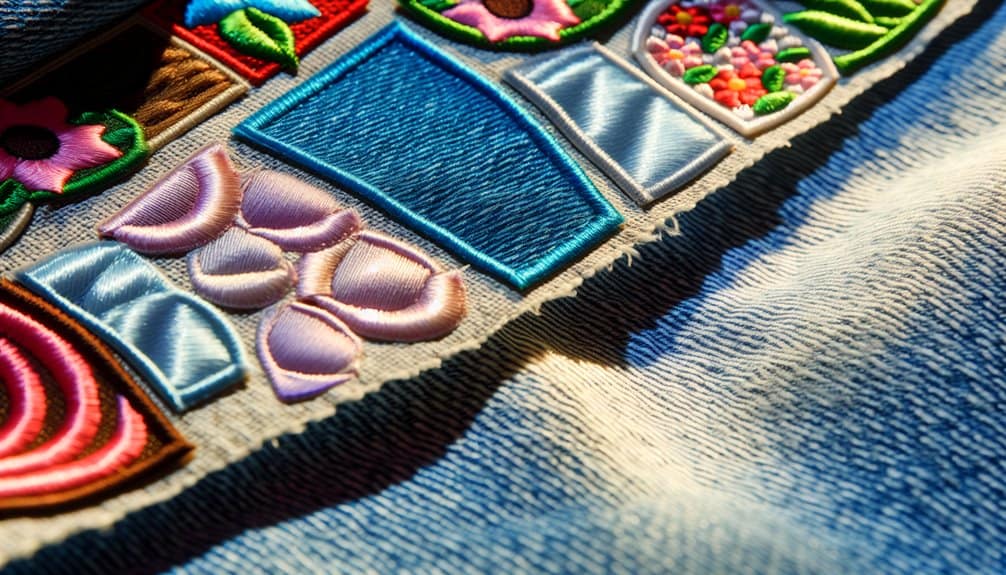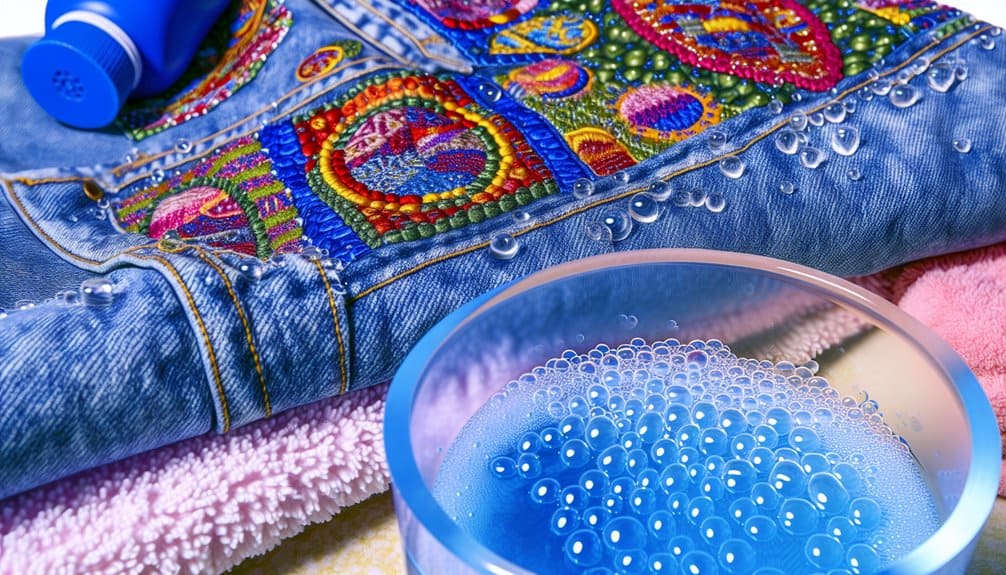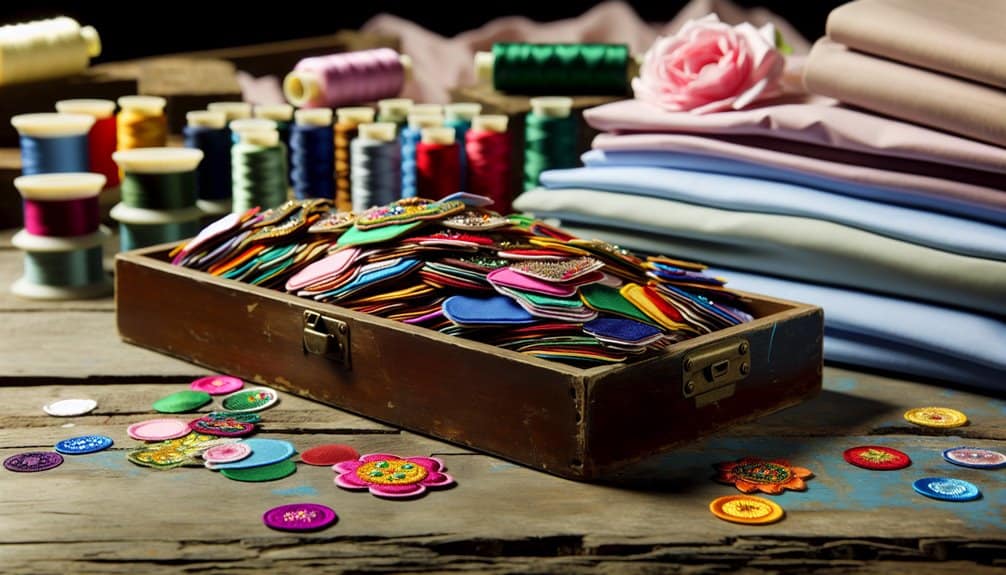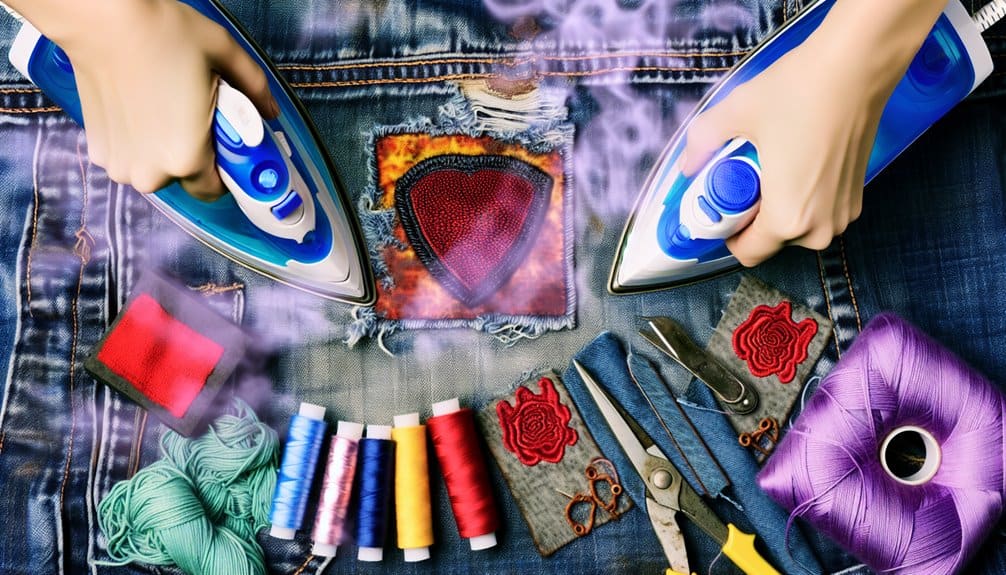Iron-on patches require careful handling to maximize durability. Users should apply patches using medium to high heat with consistent, firm pressure and protect the fabric with a thin cloth. Washing in cold water, turning garments inside out, and air drying help preserve patch integrity. Proper storage in cool, dry environments, along with prompt repair of loose edges, prevents premature wear. The secrets to extending patch life go far beyond these fundamental strategies.
Proper Application Techniques for Maximum Adhesion

Mastering the art of iron-on patch application begins with understanding the vital steps for ideal adhesion. Proper technique involves selecting the right heat settings on the iron, typically between medium and high, depending on the fabric and patch material. Application pressure plays a significant role in ensuring the patch bonds securely to the garment. Users should place a thin cloth over the patch to protect both the patch and the fabric surface during the ironing process.
Apply consistent, firm pressure while moving the iron in slow, circular motions. Hold the iron in place for approximately 30-45 seconds, ensuring complete coverage of the area. Allow the patch and fabric to cool completely before handling or wearing to maximize the bond’s strength and durability.
Selecting the Right Fabric and Surface

After perfecting the iron-on patch application technique, selecting an appropriate fabric and surface becomes equally important for long-term patch adhesion. Fabric compatibility determines the patch’s durability and appearance. Different materials respond uniquely to heat and adhesive properties, requiring careful consideration.
| Fabric Type | Compatibility | Surface Preparation | Recommended Action |
|---|---|---|---|
| Cotton | High | Clean, smooth | Ideal for patches |
| Synthetic | Moderate | Pretreat surface | Use low heat |
| Denim | Excellent | Remove lint | Reinforce edges |
| Silk/Delicate | Low | Use a protective cloth | Minimal heat |
Surface preparation involves thoroughly cleaning the target area, removing oils, dirt, and lint that might compromise adhesion. Smooth, tightly woven fabrics provide the best foundation for iron-on patches. Understanding fabric characteristics guarantees successful application and extended patch longevity.
Washing and Cleaning Strategies to Preserve Patches

While proper washing techniques can greatly extend the life of iron-on patches, many individuals unknowingly compromise patch durability through improper cleaning methods. Ideal preservation requires careful attention to washing temperatures and the selection of suitable detergents. Garments with iron-on patches should be washed in cold or lukewarm water, never exceeding 30 degrees Celsius, to prevent adhesive breakdown and lifting of the patch edges. Harsh detergents can degrade patch materials, so selecting mild, gentle cleaning agents is essential. Turning garments inside out before washing provides an additional protective layer for patches, minimizing direct friction and potential damage. Hand washing remains the most conservative approach, but if using a machine, select a delicate cycle with minimal agitation. Air drying is recommended to maintain patch integrity and prevent heat-related degradation of the adhesive.
Storage and Maintenance Tips

Safeguarding iron-on patches begins with strategic storage techniques that protect their adhesive quality and visual appeal. Proper patch organization involves keeping patches in a cool, dry environment away from direct sunlight and humidity. Collectors and enthusiasts should use acid-free storage containers or protective sleeves to prevent deterioration and maintain the integrity of the patch.
Patch protection requires careful handling and minimal manipulation. Store patches flat or rolled loosely to prevent creasing or permanent deformation. Use separate patches, ensuring they are made of archival-quality tissue paper to prevent potential color transfer or adhesive interactions. Temperature-controlled spaces, such as interior closets or dedicated storage cabinets, offer ideal preservation conditions.
Periodic inspections guarantee the early detection of potential damage, allowing for timely intervention and maintaining the patches’ long-term condition and aesthetic value.
Repairing and Touching Up Worn Patches

Although wear and tear are inevitable for iron-on patches, strategic repair techniques can restore their appearance and functionality. Patch reinforcement techniques help extend the life of damaged patches by carefully addressing loose edges and fraying, thereby enhancing their durability. Crafters can use fabric adhesive or carefully re-iron the patch to secure loose sections and prevent further deterioration.
For patches with fading color, patch color matching becomes essential. Textile markers or fabric paint matching the original patch color can help touch up worn areas, providing a seamless repair. When the patch edges start to lift, carefully trim loose threads and reapply a thin layer of iron-on adhesive to prevent complete detachment.
Consistent maintenance and prompt repairs guarantee patches remain vibrant and securely attached to garments.
